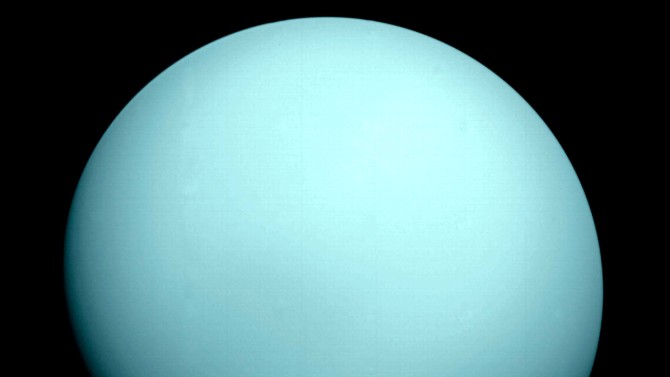
The nation's top planetary scientists have proposed exploring the frozen ocean world of Encedalus, a moon of Saturn.
Cornell-chaired panels advocate Uranus, Enceladus missions
By Blaine Friedlander
Over the next 10 years, a collection of the nation’s top planetary scientists and astrobiologists – using suggestions from panels chaired by two Cornell professors – are advocating for exploratory voyages to Earth’s cold, distant solar-system planetary companion Uranus and the icy Saturn moon Enceladus.
The National Academies of Sciences, Engineering and Medicine Planetary Science and Astrobiology decadal survey, released April 19, has identified U.S. national scientific priorities and opportunities to make funding recommendations for agencies – specifically NASA – to boost the advancement of planetary science and astrobiology through 2033.
Jonathan I. Lunine, the David C. Duncan Professor in the Physical Sciences and chair of the Department of Astronomy in the College of Arts and Sciences, chaired the two-year Panel on Giant Planet Systems, which suggested the Uranus Orbiter and Probe (UOP) mission – the scientists’ highest priority large mission.
Alexander Hayes, professor of astronomy (A&S) and director of the Cornell Center for Astrophysics and Planetary Science, chaired the Panel on Ocean Worlds and Dwarf Planet Systems, which proposed the Enceladus Orbilander, as NASA’s second-highest priority large mission.
“I’m excited about the breadth and type of scientific exploration that we’re hoping to see,” Hayes said. “If everything that is recommended flies, you’ll see the boldest decade of planetary exploration that NASA has ever conducted.”
When Lunine started his astronomy career in the 1980s, he said planetary exploration was in trouble. “The Galileo mission was the only thing going to the outer solar system and that hadn’t been launched. The Uranus and Neptune parts of the Voyager missions had yet to happen, but they were flybys planned,” Lunine said. “The program looked bleak.
“Now fast forward to today and we’ve got an armada of missions at Mars, we’re collecting data at Jupiter and we have a mission ready to go to Europa (a moon of Jupiter) to determine its habitability,” he said, “and now there are more potentially exciting and important missions in the next decade.”
The Uranus Orbiter and Probe would conduct a multiyear orbital tour to the planet through flybys and the delivery of an atmospheric probe – examining the Uranian clouds, atmospheric structure, composition, the planet’s rings and moons. The report said that a launch is viable within the next decade.
The Enceladus Orbilander would search for evidence of life on the frozen moon of Saturn, in a proposed mission that would examine fresh plume material – much like going through a misty cloud – originating from the world’s interior ocean. The mission includes two phases, a 1.5-year orbital phase and a two-year landed phase.
“The cool thing about Enceladus is that it delivers ocean samples for free,” Lunine said. “It shoots them out of the south polar region. You’ve got ocean material right there raining down.”
Sponsored by NASA and the National Science Foundation, the National Academies prepares a survey in astronomy every 10 years, to guide federal agencies on stepping-stone projects and mission strategies.
Lunine and Hayes are both fellows at Cornell’s Carl Sagan Institute, named for the late, famed Cornell astronomy professor. “If he had lived to today, he would see that these ideas are part of his legacy,” Lunine said. “And he would say that this is exactly what humankind should be doing – to understand our place in the cosmos and where we came from.”
Hayes noted that Sagan was involved in NASA’s first life-detection experiments onboard the Viking Mars landers in the mid 1970s. “This decadal survey is proposing the next generation of dedicated life-detection missions,” Hayes said. “That’s something that Carl Sagan would be very proud to see happen.”
Media Contact
Get Cornell news delivered right to your inbox.
Subscribe

